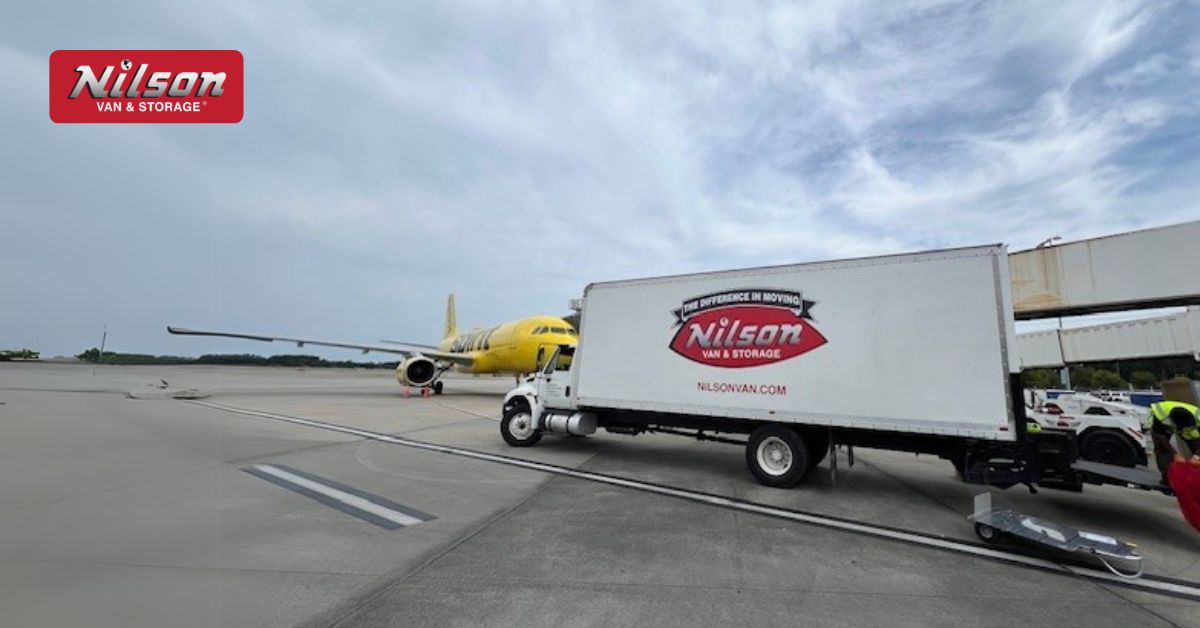Insights and Inspiration
Explore Our Blog for Expert Moving Tips and Updates
Welcome to the Nilson Van and Storage blog, your go-to resource for all things moving. From practical packing advice to stress-free relocation tips, our articles are designed to simplify your move and keep you informed. Whether you’re planning a local move in Columbia or an international relocation, explore our latest posts for insights, trends, and updates to make your journey smooth and hassle-free.
Top Benefits of Hiring Movers in Savannah for Your Relocation to Charlotte, NC


May 9, 2025
Top Benefits of Hiring Movers in Savannah for Your Relocation to Charlotte, NC
If you’re searching for movers in Savannah to help with a relocation to Charlotte, NC, you’re already taking a smart...
Top 10 Tips for Choosing Corporate Relocation Movers in Charleston


May 7, 2025
Top 10 Tips for Choosing Corporate Relocation Movers in Charleston
Corporate relocation movers play a critical role in ensuring a smooth transition when a business shifts operations from one location...
How to Find the Best Local Moving Companies in Columbia SC


May 5, 2025
How to Find the Best Local Moving Companies in Columbia SC
How to Find the Best Local Moving Companies in Columbia SC Finding reliable local moving companies can feel overwhelming, especially...
How to Choose the Best International Movers for a Stress-Free Relocation


May 2, 2025
How to Choose the Best International Movers for a Stress-Free Relocation
International movers play a crucial role in turning a potentially overwhelming overseas relocation into a seamless experience. Whether you’re moving...
Why Warehousing Services in Savannah Are Essential for Your Business


Apr 30, 2025
Why Warehousing Services in Savannah Are Essential for Your Business
Warehousing services play a pivotal role in helping businesses in Savannah thrive in today’s competitive and logistics-driven economy. Whether you’re...
Switzerland to USA: Your Commercial Moving Company to Charleston


Apr 29, 2025
Switzerland to USA: Your Commercial Moving Company to Charleston
Relocating a business from Switzerland to USA is a complex endeavor that requires meticulous planning and execution. Whether you are...
Key Factors to Consider When Selecting Hotel Furniture Installers


Apr 28, 2025
Key Factors to Consider When Selecting Hotel Furniture Installers
Hotel furniture installers play a crucial role in shaping the guest experience and operational flow of any hospitality space. Whether...
Expert Guide to Military Moves from Beaufort, SC to Jacksonville, NC


Apr 25, 2025
Expert Guide to Military Moves from Beaufort, SC to Jacksonville, NC
Military moves are a regular part of life for service members and their families, especially those stationed in Beaufort, SC....
Trusted Corporate Movers: Germany to Charleston Business Relocations


Apr 24, 2025
Trusted Corporate Movers: Germany to Charleston Business Relocations
Relocating a business is a complex undertaking, and when it involves an international move, the challenges multiply. Companies moving from...
Need to Ship from Columbia to Charlotte? Choose Dry Van Transport


Apr 23, 2025
Need to Ship from Columbia to Charlotte? Choose Dry Van Transport
Dry van transport is one of the most reliable and widely used methods for shipping goods between major hubs like...
How Military Packing Ensures Safe Transport to Palm Beach, FL


Apr 22, 2025
How Military Packing Ensures Safe Transport to Palm Beach, FL
Military packing is essential for ensuring that service members experience a smooth, secure, and stress-free relocation to destinations like Palm...
What to Expect When Using Car Transport Services in Charleston, SC


Apr 21, 2025
What to Expect When Using Car Transport Services in Charleston, SC
Car transport services are the go-to solution for individuals and businesses looking to move vehicles efficiently and safely across distances....

